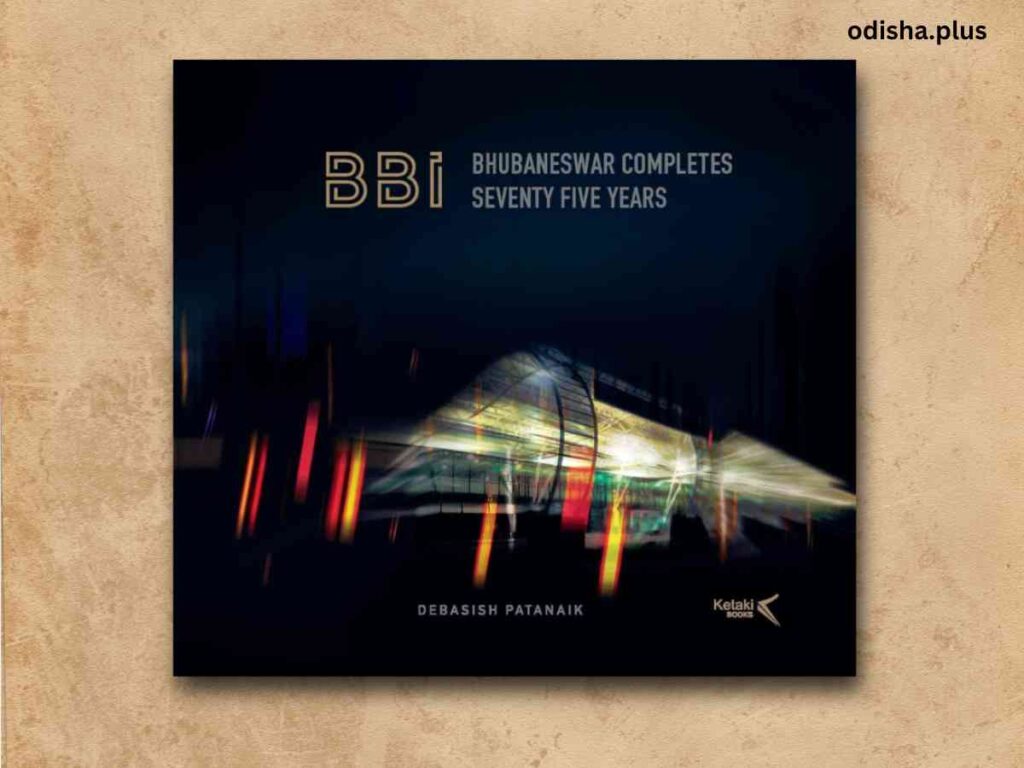BBi – Bhubaneswar Completes Seventy Five Years by Debasish PatanaIk represents the most recent contribution to the literature concerning Bhubaneswar
Bhaskar Parichha

BBi – Bhubaneswar Completes Seventy Five Years
Debasish Patanaik
Ketaki Books
Bhubaneswar
Exceptional books are rare, and when they do appear, they establish themselves as significant milestones in literary history. BBi – Bhubaneswar Completes Seventy Five Years by Debasish Patanaik represents the most recent contribution to the literature concerning Bhubaneswar. Debasish Patanaik, or Deboo as most people call him, has a Master’s in Political Science from Utkal University and an MBA from Xavier Institute of Management. He’s a serial entrepreneur in the hospitality industry and is known for starting the first chain of Odia cuisine restaurants called ‘Dalma.’
This coffee table book (CTB) is a visually stunning and informative tribute to the city of Bhubaneswar, capturing its rich history, cultural evolution, and architectural marvels over the past 75 years. The book is designed to appeal to both residents and visitors, offering a comprehensive look at the city’s transformation from a historical hub to a modern urban center. The objective of this book is to commemorate a city’s 75-year evolution.
Writes Deboo in the preface, ‘BBI or Bhubaneswar, to the outside world, is a new city. It emerged as the capital of Odisha in India’s post-independence era. Initially designed to be the administrative headquarters of the state, Bhubaneswar was planned for a nominal population of only 20,000. With the passage of time and a change in approach of the policy makers, the city has grown as a leading tier-two city of the country.’
‘Bhubaneswar has expanded much beyond what the original development blueprint intended. Old Bhubaneswar colloquially known as ‘Old-town’ (comprising of older homes and containing cultural landmarks like the famous Lingaraj temple and other similar centuries-old religious architecture) has also seen tremendous growth. This proposed administration-only town has evolved to become the largest city of the state. Over the past couple of decades, the city’s reputation as an important commercial and educational center has cemented its status in the eastern part of the country. Additionally, a recent surge in Odisha’s endorsement of various sports has led to Bhubaneswar being identified as a leading host of sports events in the nation.’
‘However, all the above-mentioned growth of the city has neither been documented in a linear manner nor is it readily available for future reference. Some of the older structures have been renovated over the years, losing the distinctive look and feel. Having lived in Bhubaneswar since the early 1960s, I have very closely observed the developments around the city in the past six decades. Its ups and downs, its celebrations and sorrows, its sunrises and sunsets, its rains and winters, its cyclones and storms, its people and politicians, its buildings and monuments – all of these have been integral to my life, my memories, my progress and my success.’
The CTB provides a concise examination of Bhubaneswar’s importance as the capital of Odisha, and its historical significance. It further explores a city’s modern development and transformation following India’s independence. The planning and establishment of Bhubaneswar as a contemporary urban center after its designation as the capital in 1948 are discussed, highlighting the contributions of key figures and architects, notably Otto Koenigsberger and Julius Lazarus Vaz. Additionally, the text addresses cultural milestones, including the proliferation of educational institutions, cultural festivals, and the arts. It documents the creation of important landmarks and public spaces such as parks, museums and libraries.
The narrative effectively captures economic development and urbanization through visual representation, detailing the effects of liberalization on Bhubaneswar’s economy, particularly the growth of the IT and service sectors. It also considers urban challenges that have arisen from rapid expansion, including infrastructure and housing issues. A brief overview of the city’s current status is provided, encompassing demographic shifts, technological progress, sustainability efforts and Bhubaneswar’s involvement in the Smart Cities Mission along with its future aspirations.
In terms of architectural heritage, the text features dedicated photographs that highlight a city’s iconic temples, modern structures, and urban planning. The inclusion of high-quality images sourced from Prof. Jin Freeman, Dr. Susan Seymour and Walt Brown enhances the book’s appeal. Illustrations of significant sites, such as the Lingaraj Temple, Udayagiri and Khandagiri Caves and contemporary architecture are also notable features. Furthermore, the text explores the cultural diversity of Bhubaneswar, highlighting the various communities that reside within the city.
In a sense, this endeavor aims to document the evolution of Bhubaneswar through a photographic narrative intended for future generations, capturing the essence of the original structures and locations that may be lost to modernization over time.
Deboo is equally optimistic about Bhubaneswar: ‘Bhubaneswar has not been able to grow as per plan, right from its inception. However, the city today, despite its issues, is one of the cleanest and safest habitations in the country. The greenery around the city, in spite of two major cyclones of 1999 and 2019, is blissful verdant. Chandaka forest, the lungs of Bhubaneswar, continues to strike a balance, though some portions of it have already been carved out for construction. The trademark pleasant cool evening breeze during the hot summer months have reduced, if not blown away. The burgeoning educational institutions and sports activities, world class railway stadium multiplexes, flyovers, further development and expansion of the Airport are bound modify the landscape of the city.’
In comparison to other cities nationwide, if Bhubaneswar continues to be recognized as one of the most livable and beloved state capitals, it has the potential to evolve into a premier destination for tourism and commerce over the next 75 years, thereby securing its rightful status as one of the finest cities in India.
With a foreword by former Chief Minister Naveen Patnaik, this book represents a commendable endeavor, reflecting the diligent effort invested in its creation. The visual presentation has been executed with great care and precision. Every significant milestone, spanning 1960 to 2023, was included in the photographic documentation. The design and layout of this coffee table book are exceptional. While coffee table books typically feature minimal text, the written content in this volume is more than sufficient to provide insights into a city’s evolution. Thoughtfully edited and expertly crafted, this book serves as an essential resource for understanding, appreciating, and anticipating the city’s future.
Coming as it is from an individual who has resided in Bhubaneswar for nearly 60 years and who has a deep connection to the city, this book serves as a visual delight. The author has punctiliously documented the city’s evolution over the years. It represents the initial segment of his continuing research on Bhubaneswar, indicating that further work of this nature can be anticipated in the future.
(The author is a senior journalist and columnist. Views expressed are personal.)





























